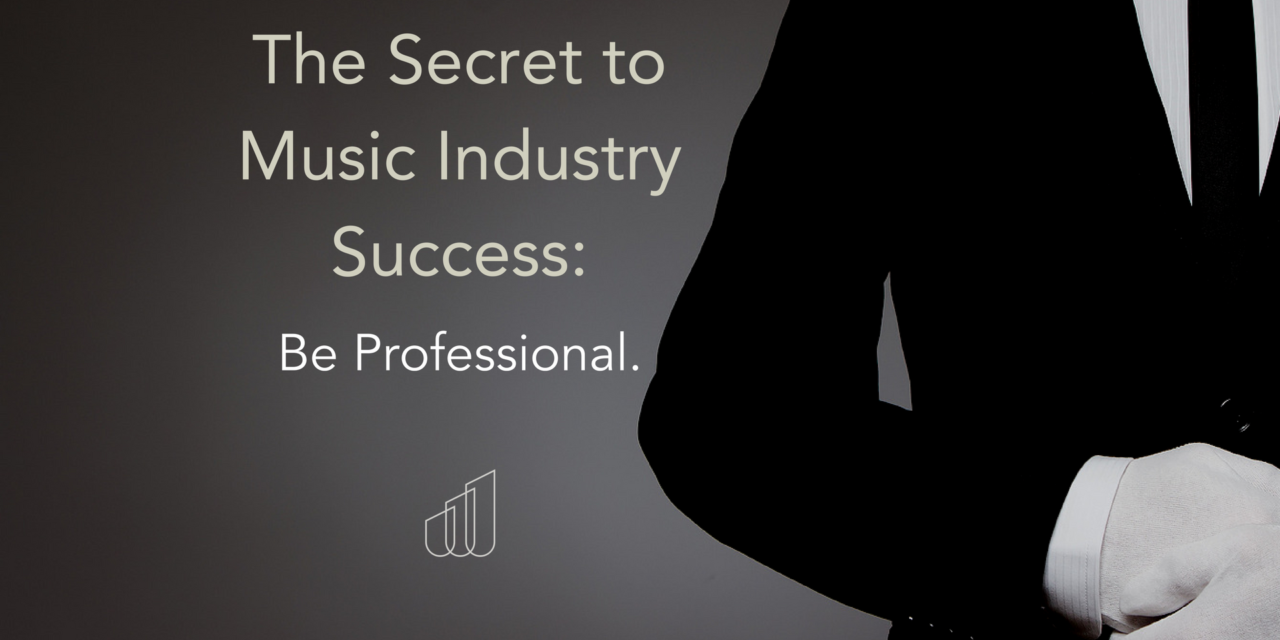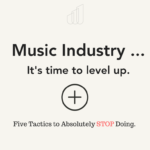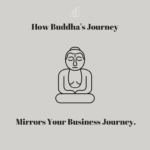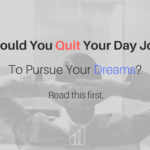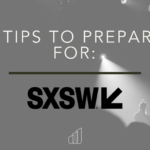Have you ever seen the 1980’s Swayze flick, Roadhouse?
In a nutshell, Patrick Swayze is hired as a lead bouncer and teaches other bouncers how to properly run a particularly rowdy bar. And while the bouncers just want to break a few jaws when patrons get out of line, Swayze comes in with a new philosophy: “We’re going to be nice”.
This “radical idea” of being nice blows the minds of the small-town, blood thirsty bouncers — but at the end, it worked out.
If someone mouths off to them? We’re going to be nice.
When someone walks through the door.. we’re going to be nice.
If someone needs to be escorted out, we’re going to be nice about it.
And while the pay off in the movie was different (we’re going to be nice until they give us a reason not to), this clip always comes to mind when I think about music marketing.
Except instead of “be nice”, it’s “be professional”.
When we release a new track, we’re not going to spam it in people’s inboxes –because we’re going to be professional.
When we’re promoting a tour, we’re not going to tweet a bunch of text and unsized images — instead, we’ll be professional.
Instead of copying and pasting links to reporters, we’re going to develop a media list and build proper relationships — because we’re professional.
I’ve been very fortunate to work with some really great folks throughout my young career. I’ve managed PR and social media campaigns with the majors, and have had some pretty cool consultation partnerships with distributors, DIY and indie artists.
And throughout these campaigns and consultations, there’s one piece of advice that always remains seems to remain consistent. No matter the artist, no matter the genre, there’s one specific advice I seem to go fall back to.
“Be Professional.”
Social media has been our biggest blessing, but also our greatest curse. Social media has leveled the playing field (to some extent), and has given everyone the same tools to broadcast their message. This is great because it gives artists a chance to shine and be discovered in areas unlike ever before.
But it’s also a curse because, well, everyone is now an artist.
Everyone is about to release a single, or drop a mixtape.
Everyone, no matter their talent level, has the ability to make lots and lots of noise. This noise from the loud wannabes (bless their hearts), can at times overpower the noise being made by the serious artists.
So, how does one stand out? How does a serious, talented artist, with a good product stand out from the static of the rest?
It sounds so simple, but… be professional.
Because the folks that are spamming people’s DMs with autoresponders with links aren’t professional.
Because the musicians that aren’t keeping up with their social media aren’t professional.
Or on the flip side, the artists that are active, but aren’t posting enough about their work — they aren’t professional, either. Or the ones that are posting their work but it’s unedited videos or unmastered tracks.
There’s a phrase that we’ve been beating into the ground in the DIY Music community, but it’s a true one. And that phrase is “your band is your brand”. Sure, there are differences in an artist’s digital presence vs. a company’s digital presence. However, the output, content mix and growth tactics of a major brand can still be applied to artists. I know this because, well.. the major labels and large indie labels do it, and they do it well.
Go and check out a favorite non-music brand of yours — preferably one with an active social media presence. Then go and check out a favorite major artist of yours. You’ll notice that while the brand is likely more corporate facing, the artist and brand are going to share a few common factors.
- A mix of personal, branded and sales posts.
- Some form of (tasteful) paid advertising campaign.
- A mix of media — videos, photos and text.
- Various active social media channels, each with different “tones”–rarely the same content reposted.
Marketing is marketing. This doesn’t mean you’re being robotic or being “corporate”, that artist is going to have more personal and maybe even some more profane and honest posts than a brand, but the building blocks for marketing growth are there. And that’s why they succeed. Because they’re professional — in both appearance, as well as strategy.
So, what makes an artist’s online presence, “professional”.
A Solid Content Mix
No one wants to see a sales post repeated over and over again. A solid content mix is going to include a mixture of posts that build your brand, miscellaneous/personal content, and then sales posts. Let’s talk about each one, as they’re essential to your online presence.
Brand building posts include snippets of upcoming music, photos of you in the studio, or even an acoustic video for your fans.
Miscellaneous/personal content, is the philosophy that makes TMZ so popular. Folks want to see the personal sides of artists and celebrities. Yes, even you. Go ahead and post about your favorite restaurants, share pictures from the basketball game you’re at. This breaks up all the “work” posts and makes you more human.
Sales posts are just that — posts that bring in sales. These are the iTunes links and the pre-order links, and merchandise deals.
Content mix strategies have been used by artists and brands since social media became a necessity. One way artists and brands ensure a good content mix is the 70-20-10 rule.
The 70-20-10 rule states 70% of your content should be brand building, 20% misc./personal content and 10% should be sales posts.
Now is this an exact science? Of course not. But it’s a good barometer.
For instance, you could post a photo at a restaurant and say,
“Great to be eating at Shady’s after our show at The Silver Squirrel Bar. Best Pad Thai in Sacramento! We’ll be back on Saturday night, so be sure to check out the pre-sale link in our website!”
That post was brand building, because it mentioned a previous show, personal because it’s a casual photo at a favorite restaurant, and sales because it plugged a pre-sale link. Nonetheless, despite the gray area, a healthy content mix is surely going to make you appear professional, while also helping your social media growth and social media reach, too.
Different Content for Different Channels
There’s this myth that an artist should be on every social channel, just because they exist. I’ve met with many artists who proudly list off the dozens of social media channels that they can be found on — but most of the time, some of those channels are outdated or haven’t been updated in quite some time.
The bottom line is this: you should never be on a channel just to be on it. This usually leads to lazy social media channels that aren’t updated, or the same post across each social media outlet.
But, each channel needs it’s own love, consistency and voice. Maybe your Instagram is your go-to for that personal spin on your work, Facebook is your go-to for more promotional posts because of their ad mechanism, and Twitter is your platform to reach out to fans directly.
But still note that it should fall into the previously mentioned content mix.
But the overall idea here, is to ensure that your fans have a unique experience for each channel that they’re on. If a journalist, fan, label or other influencer visits your social media channels — they want to see various parts of who you are, if people are digging your work, and how you’re carrying yourself.
Proper Content & Consistency for Each Channel
I’m not going to tell you what’s “proper” for your social media channels — being professional doesn’t mean 100% proper grammar, and being 100% PC. It means being genuine. Say what you would say, speak in a tone that you would normally speak in. But obviously, be aware if you’re saying something offensive or being reckless.
“Remember, everyone is investing in you in some form or fashion.”
A booking agent is investing in you, because they are reliant you’ll bring people in to buy drinks.
A journalist or blog relies on you because the outlet needs clicks on their pages.
A fan, most literally, invests in you buy buying merch, show tickets and music.
Therefore, all of these entities want to see that you’re a competent person — they want to see engagement and interaction on your pages, they want to know people react well to you. One way to showcase this is by having a consistent presence, with each outlet being updated and having it’s own voice.
Another simple way to be professional is just by being consistent and active. Here are some consistency guidelines you can follow. These are in no way a hard guideline, but you’ll certainly have a more robust outlet by following the below.
Facebook: 1-2 Posts a Day.
Facebook is certainly falling off the wayside for some newer artists, but it still has a very powerful ad mechanism, and let’s face it — folks are still on the outlet.
Facebook is different as it’s not “real time”, you may post something on Monday at 12:00pm, but it might not appear on someone’s newsfeed until Tuesday night. How often something appears on someone’s Facebook newsfeed depends on how much interaction your post gets.
If you want your post to appear more on peoples feeds, be sure you’re making posts that make fans want to comment, like and share.
1-2 posts a day is a healthy number for Facebook.
Twitter: 5 minimum a day
One way to be unprofessional is spamming on any social media outlet, and Twitter is the most notorious. However, since Twitter is so “real time”, you need to post often. Feel free to post more than 5 times a day, as long as your posts are well spaced out.
But also be sure you’re throwing in a good mix of content, as stated before. Not just sales and branding content — be fun, be personal, be off topic at times. Be yourself.
Instagram: 1 Daily Minimum
Instagram is a tough one, though it’s a very useful tool for artists. If you can find content to post daily, do it! This can also be graphic posts of quotes, or photos of artists you admire, but obviously try and get your own brand in there often.
If you don’t have time to manage all these outlets, check out Buffer App, HooteSuite, Post Planner, Sprout Social, or any other program that lets you schedule content in advance. By using a scheduler, you can schedule branding or sales content in advance, and just worry about hopping on, interacting with fans, and having fun on social media.
While we’re at it, make sure your photos and images are properly sized for your social media channels. There are a few good constantly updated guides out there like this one, I also recommend Canva, a tool for whipping up simple social media graphics and even resizing images.
Get Your EPK & Others Together
I grew up in a very small town — but we had a fun local music scene. When I was booking our little rinky-dink cover band, one thing that got us gigs was the fact that we had our materials together. Namely, we had an EPK. One that was professional, and much nicer than other local artists. Actually, other local bands didn’t even really use one.
So, the band that comes with the EPK is going to look better than the band that just wrote an email with a Mp3 attached.
Again, being professional.
Have your EPK together, familiarize yourself with what goes into a quality EPK and keep it up to date. Same goes for your website, newsletter and any other way you’re communicating your brand.
If you’re in a pinch, I do offer artists easy EPK services. Simply contact me!
Okay, now pay attention.. The Meat & The Potatoes..
Dealing with PEOPLE.
Sure, we talked about some best practices for social media — but let’s face it. If your social media is on-point, your website is all prettied up but you’re spamming the hell out of a reporter, that’s still not professional.
This tends to be where my issues comes in. It’s when an artist writes to a writer or even someone like me, and it’s just a SoundCloud link, with a very vague message. Or, maybe they do write me on Twitter and I go check out their timeline and it’s the same copy and pasted message sent to dozens of people.
Here’s where “being a professional” really becomes essential.
Focus on Real Relationships not Paid Ones
A lot of artists — namely in hip hop — fall into the trap of these eblast services. These services are $200 a pop or so, and guarantee you’ll be placed on industry blogs. Some of these are even top-tier. However, they are in some obscure place on the website, not shared on social media by the outlet, and it’s a copy and paste job.
Sure, they build an artists SEO, sure an artist can put that press mention in an EPK, but in reality, if the outlet isn’t pushing it out to their thousands of followers and readers, and that URL is really only made public to the artist — the only good it’s doing is having an big outlet’s logo stamped on it.
Now, let’s say that big name outlet wrote an article on an artist, gave the artists take on the music, and discussed how the writer personally enjoyed it. Or, maybe they included the artist on their Top 5 Must-Hear Songs This Season. Then the outlet shares this on social media.. it’s a recipe for success.
(Just ask Post Malone, by organically being featured on lists such as Complex’s Songs About to Blow, he pretty much skyrocketed in a summer.)
Point is.. having a genuine write-up is much better than having a bio copy and pasted on the back end of a website. Even if it’s Source, even if it’s Complex, even if it’s Hip Hop DX, if they aren’t posting your work on their social outlets, or showcasing it on a main page of their site, then it’s really not that helpful.
And you’re out of $200 bucks, which could have gotten you great credible reach in Twitter or Facebook ads.
So, instead of going the lazy route, be professional by writing real pitches, and developing real relationships with writers, fans, and talent buyers.
Write Authentic Pitches
Now, let’s not even think of it as a “pitch”. The word pitch itself is a bit sales-ish. Instead, think of it as an introduction. You’re introducing a writer to news, or new material. For purposes of familiarity, we’re still going to call it a pitch. But just remember, you’re conversing, you’re informing — not selling.
A pitch is not:
- A copy and pasted bio, cover art and SoundCloud link.
- A DM on Twitter or in their mentions.
- An blatant and impersonal copy and paste email or eblast.
A pitch is:
- Authentic and quick. It should be an email that’s to the point, and also is directed towards the writer, and makes mention of their previous work or the outlet they write for (to ensure they feel it’s genuine).
- Not pushy — it’s fine (and sometimes key) to follow-up on emails, but know when to back off.
- Should be done via email. It’s fine to establish a connection on Twitter or even LinkedIn, but don’t pitch in a DM. Maybe start a conversation and ask if you can email content over, but don’t send everything in a Twitter message. Be friendly, not overbearing. And still engage with this person online, share their work, RT their tweets if it vibes with you.
Here’s a very off-the-cuff pitch to a writer. Be brief, talk about why they should invest their time in you, and give them access to your work. Simple.
Example:
Hello [Name of Writer]
My name is Tyler Allen. I am a digital marketing strategist working with artist, Jack Steel for his latest single, California, which has been accumulating recognition and placements within the last few months. (MtvU, The Cool, a 2016 SXSW showcase and growing radio play.)
I’m familiar with some of your recent indie artist stories, and I’d love if you could consider Jack’s single for any of your current projects.
I’m linking to a few samples and Jack’s EPK below.
[Link]
[Link]
Thanks so much for your time, and I hope to speak soon,
Tyler Allen
Respect Fans, Writers & Others
Don’t think of it as a fan “following you” online, but instead, view it as a fan allowing you to broadcast to them.
This mindset changes things drastically.
So, now instead of thinking you’re blessing your fans with content — put yourself into their shoes. Do you want to be bombarded with sales messages? Do you want to be hit up with SoundCloud links with every follow? Likely not.
Give your fans fun content. Writers, too.
Writers maintain Twitter pages, rarely for work, but more so for personal use. It’s just today’s interconnected world that some writers throw their Twitter in their bio, or artists stumble upon it via Instagram/Twitter recommendation. A lot of writers only want to be hit up in their email, and leave Twitter to be their non-work outlet. So, just keep that in mind when reaching out.
Of course, follow your favorite writers! I’ve made plenty of friends with writers through social media, authentically. A lot of times, if we’ve introduced ourselves, they’ll ask me directly about who I’m working with and representing. And when an occasion arises, I’ll let them know I’m doing a launch campaign, and ask if I can add them to my media list.
The thing is, it’s authentic. We’ve shared each others content, we’ve interacted online– even if it’s been from a few retweets. So this way a, “Hey Jack, I’m doing a launch campaign for a client, mind if I add you to my list?” doesn’t seem so invasive.
Conclusion.
There you have it folks.
It sounds so simple, yet so involved.
By generating a system — in which all aspects of your brand are controlled and managed — you’re going to stand out by default. By having a good content mix, by being authentic and professional with writers and all of the other tips in this article, you’re automatically going to come off as more approachable and memorable than all of the static in today’s music industry.
If you’re curious as to how you are doing online, and if your channels are professional, contact me today for a consultation!

